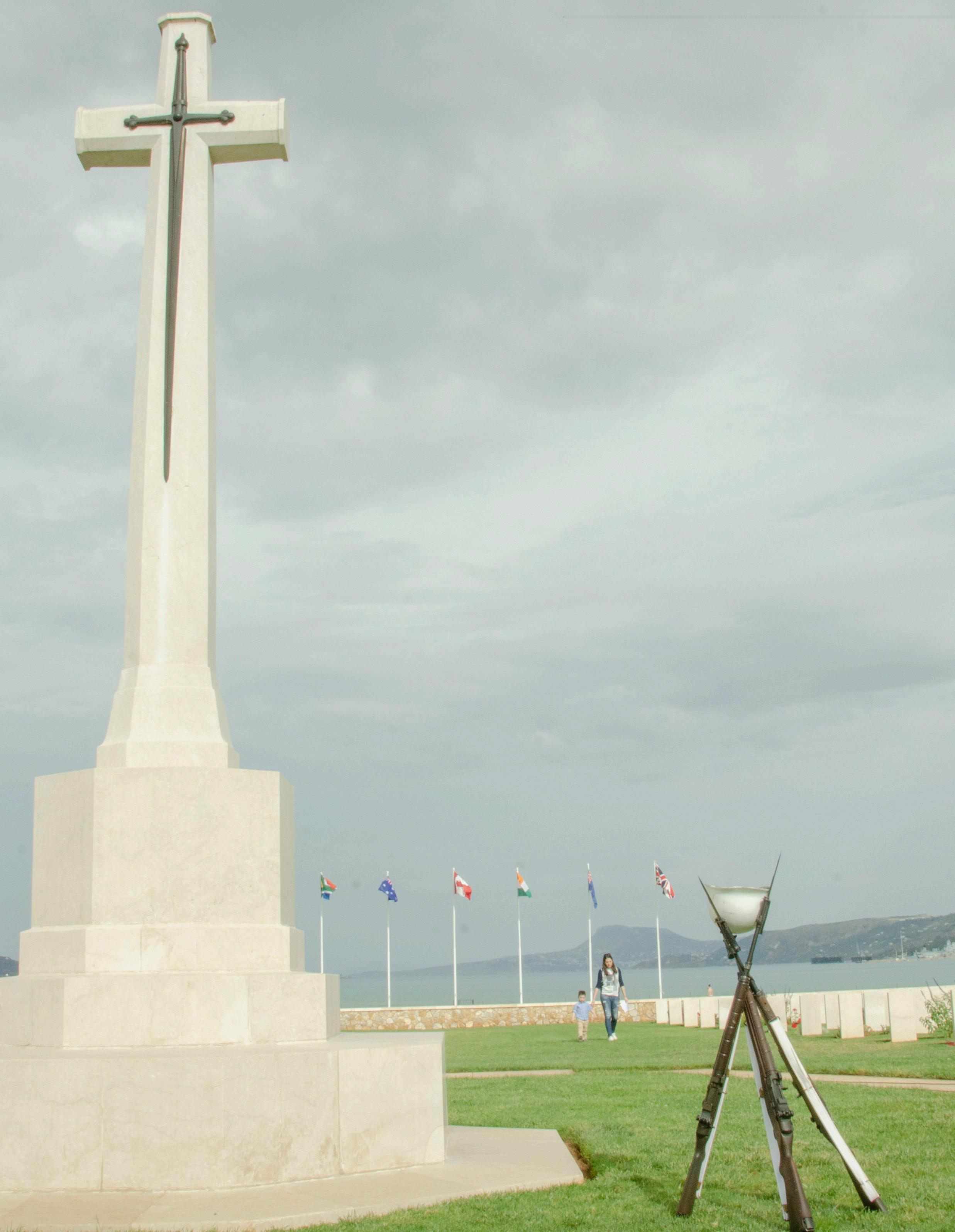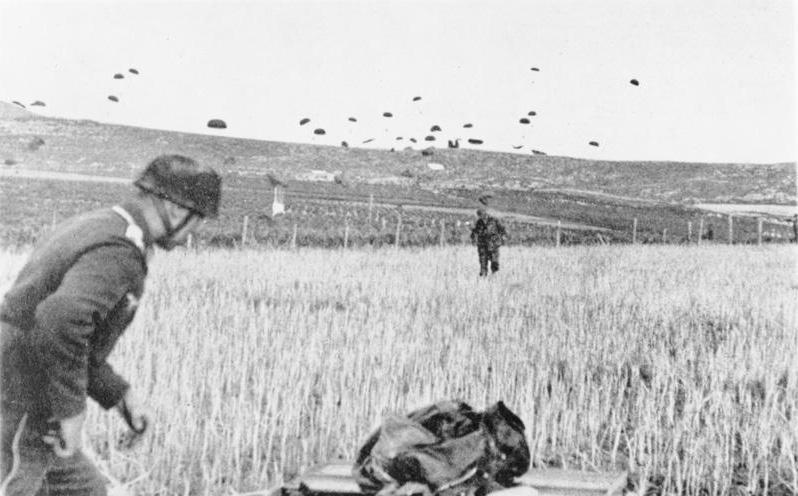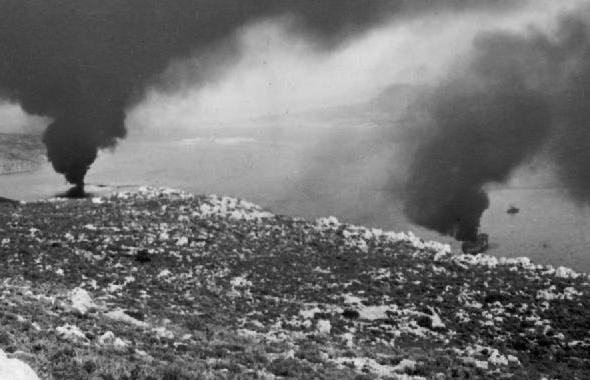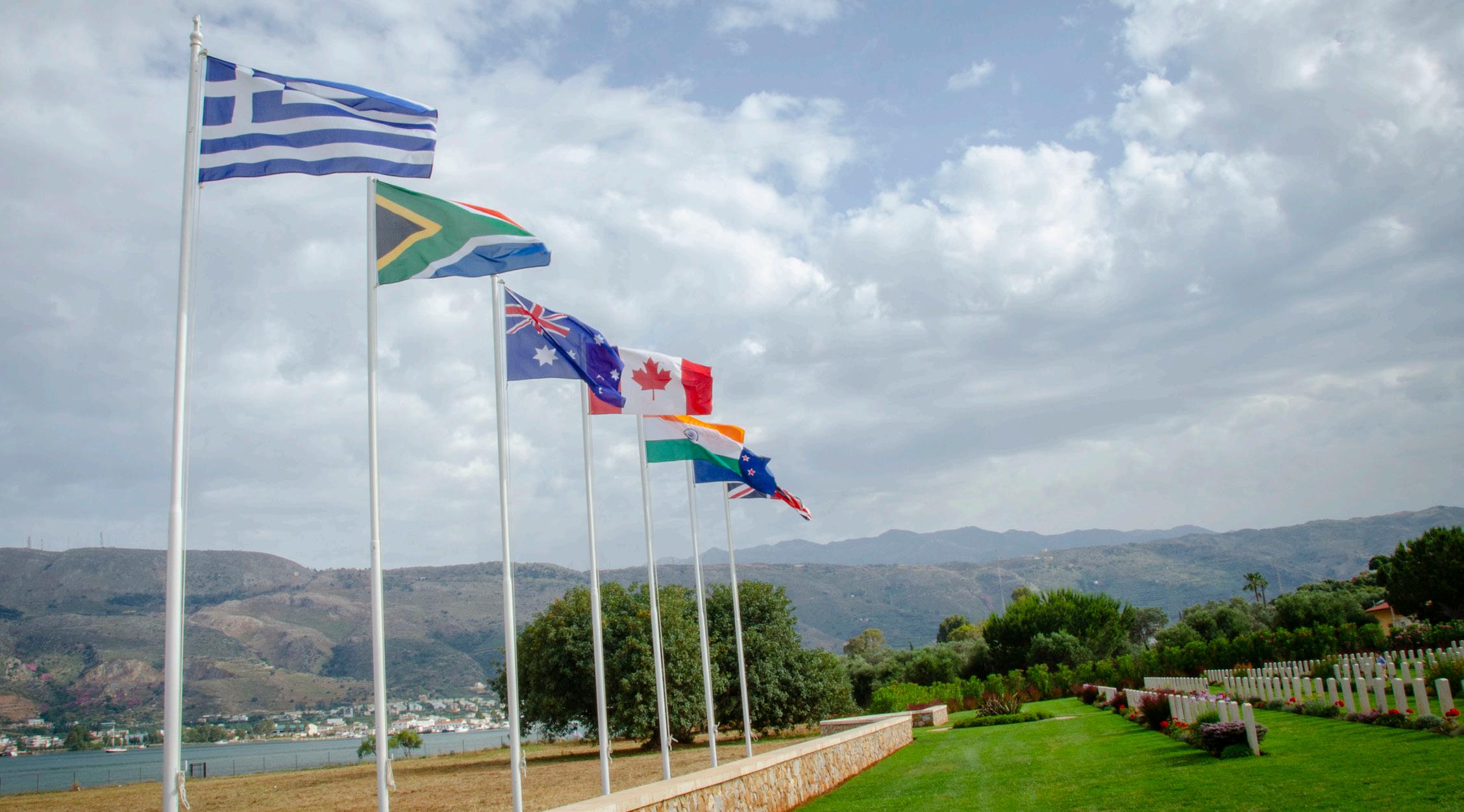
4 minute read
Greek Culture: 80th Anniversary of the Battle of Crete
Compiled with information from Wikipedia.com by Kostas Fantaousakis, Public Affairs
The anniversary of the Battle of Crete is commemorated in Chania and various villages every year during the week of May 20th. In non-COVID times, ceremonies include parades, floral offerings at memorials and paratrooper reenactments. Due to COVID-19 restrictions this year, modifications to the schedule of events are expected. Many people will visit the Souda Bay War Cemetery, where defending British and Commonwealth troops are buried, and the German War Cemetery at Maleme near Chania, which contains the remains of many of the paratroopers.
Advertisement
The Battle of Crete was a battle fought during World War II on the Greek island of Crete. The battle began on the morning of May 20, 1941, when Nazi Germany launched an airborne invasion of Crete under the code-name Unternehmen Merkur ("Operation Mercury"). Greek and Allied forces, along with Cretan civilians, defended the island.
German casualties mounted quickly as they underestimated the strength of the defenders. Many paratroopers died before they could reach the ground; others, their equipment tangled in trees, were killed as they struggled to release themselves. In one German battalion alone, about twothirds of the men were dead before the day was over.
Everywhere on the island, Cretan civilians joined the battle with whatever weapons were at hand. In some cases, local civilians went into action armed only with what they could gather from their kitchens or barns. The Cretans soon supplemented their makeshift weapons with captured German small arms.

The civilian population played a significant role in the Greek counter-attacks at Kastelli Hill and Paleochora. Civilians also fought back the Germans to the north and west of Heraklion as well as in the town center itself.
By the end of the first day, the Germans had a foothold near Maleme. The next day, they decided to throw everything into that attack because reinforcements could not be sent in without control of the airfield. The German decision to concentrate on Maleme bore fruit. On May 21 it became clear that the New Zealand infantry battalions defending the airfield and the key high ground overlooking it had withdrawn. The airfield was virtually in German hands even though it was still under artillery fire. The German transport planes began landing troops. They did so until late in the day on May 21. Eventually, mountain troops went straight into battle and tipped the balance the German way.
German dominance in the air left the defenders facing impossible odds. After six days of hard fighting the Allies had little choice but to evacuate. Parts of the defending forces pulled back to Sfakia on the south coast, and from there about 16,000 troops left the island over four nights. Those who remained were taken prisoner and would spend the rest of the war in camps. Some escaped from captivity, taking to the hills and eluding capture for the rest of the war. Cretan civilians took huge risks feeding and helping these men.

OPPOSITE: German paratroopers landing on Crete, May 1941. Source: Wikipedia.com
The U.S. Army Center of Military History, citing a report of the Historical Branch of the British Cabinet Office, concludes military historians largely accept estimates of between 6,000 and 7,000 German casualties as correct. The Allies lost 3,500 Soldiers: 1,751 dead, with an equal number wounded, as well as 12,254 Commonwealth and 5,255 Greek captured. After the war, the Allied graves from the four burial grounds that had been established by the German forces were moved to Souda Bay War Cemetery. A large number of civilians were killed in the crossfire or died fighting as partisans. One Cretan source puts the number of Cretans killed by German action during the war at 6,593 men, 1,113 women and 869 children. German records site 3,474 Cretans were executed by firing squad and at least another 1,000 civilians were killed late in 1944.

More German paratroops landing on Crete from Junkers 52 transports, May 20, 1941. Source: Wikipedia.com

RIGHT: Smoke hanging over the harbor in Souda Bay. Source: Wikipedia.com

The Souda Bay War Cemetery. File photo.
The Souda Bay War Cemetery is about 5 km east of Chania on the west of the Island of Crete. It's in a beautiful, quiet location overlooking the sea and is the last resting place of the British Commonwealth war dead who lost their lives May 20-31, 1941, during the Battle of Crete.
There you'll find rows and rows of white headstones set in immaculate lawns and decorated with borders of flowers. Little pomegranate trees – the fruit of the underworld – are laid amongst the flowers and shrubs along each row. At the seaward border of the Souda Bay Cemetery there are large bushes of rosemary - the herb of remembrance. These are significant symbols for the last resting place of so many who died in the Battle of Crete.
There are 1,527 graves, mostly British, but with a large number of New Zealanders too (447), together with 197 Australians, and other countries that were also represented. Not all those buried here are identified and some headstones bear the legend, “Known only to God”.
Visitors can sign a book with comments and feelings, and the entries are testament to the effect this moving place has on people who visit from all over the world. The visitor's book is housed in an enclosure near the entrance gate.
The War Memorial in Sfakia, Crete

Monument commemorating the evacuation during WWII of British and ANZAC (Australian and New Zealand Army Corps) forces from Hora Sfakion in May 1941. Source: Wikipedia.com
There is a famous war memorial dedicated to the Battle of Crete, located in Sfakia, a small town on the south coast of Crete. The sign reads:
“From this bay between 28th May and 1st June 1941 the last Australian, British and New Zealand forces which fought alongside the Greek forces in the fierce struggles of the Battle of Crete against the Germans, were evacuated by British and Australian warships.”







